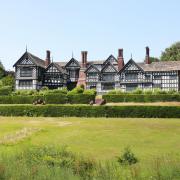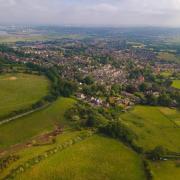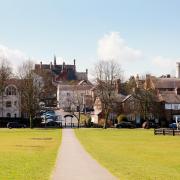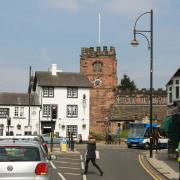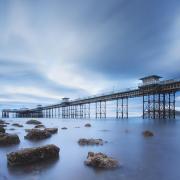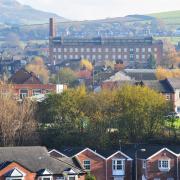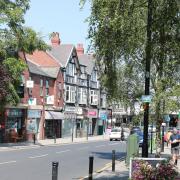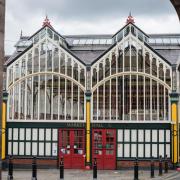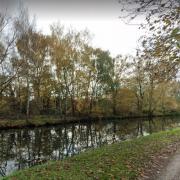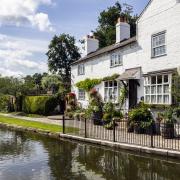Ray King takes a nostalgic trip along the resurgent Manchester Ship Canal to mark its 120th anniversary

This year marks the 120th anniversary of the opening of the Manchester Ship Canal, hailed as the engineering wonder of the late Victorian age, which for more than half of its 35-mile length, cuts through Cheshire.
The waterway, linking Eastham on the Wirral side of the Mersey estuary and industrial Salford reached its zenith in terms of the amount of cargo it carried in 1958, when 20 million tonnes were shipped along its length. That was round about the last time I sailed down the canal – with my father to New Brighton. But the growth in size of ocean-going vessels signalled a rapid decline and 30 years ago, Salford Docks closed.
As a journalist specialising in industry, then politics, I witnessed three vastly different phases of dockland’s latter years. In the 1970s, the Port of Manchester was still relatively busy; Manchester Liners’ vessels were still regularly the first to break the ice in the St Lawrence River en route to the American Great Lakes ports. Then a decade later, on one balmy sunny evening, I recall watching from the deck of the Bell’s Whisky sailing barge tied up in Number 9 Dock as bonfires of wood from demolished buildings burned like funeral pyres along the quaysides amid heaps of shattered concrete and brick.
In 1984 Salford council, with great foresight, used a derelict land grant to buy the docks from the Ship Canal Company, rebranding the area as Salford Quays, now home to the Lowry Arts Centre, thriving businesses, hundreds of desirable waterside homes and most recently Media City, northern outpost of the BBC and latterly ITV too. The transformation has been staggering; so when the opportunity arose to repeat that trip of more than half a century ago on board the Mersey Ferries’ vessel Snowdrop, which frequently plies between Salford Quays and Liverpool’s Pier Head, I enthusiastically seized it. The six-hour trip provided lots of nostalgia, but I also discovered that the 120-year history of the great enterprise is far from over.

There were more than 300 passengers from all over Britain on board Snowdrop as she slipped her moorings alongside the Lowry Outlet Mall and turned in the dock basin towards Liverpool. Here everything has changed, but once we passed beneath the raised Millennium Bridge connecting the Lowry with the south bank, and beyond Old Trafford stadium and Daniel Libeskind’s Imperial Museum North, it was almost as if the clock had been turned back a century.
For Snowdrop had entered Mode Wheel locks, the first of five huge locks along the way enabling shipping to negotiate the 60ft difference in water levels between Salford and the Mersey estuary. Soon we had left another engineering first, Barton Swing Aqueduct – carrying the earlier Bridgewater Canal over the Ship Canal – in our wake and headed beneath the soaring high level bridge carrying the M60 motorway above us, then another carrying the M6.
As the canal cuts through the Cheshire flatlands near Lymm and Thelwall I was reminded of the startling sight, in years gone by, of large cargo ships appearing to sail through fields, the canal itself being invisible from the road. Now, with water quality much improved, wildlife flourishes and 45 species of birds including herons and kingfishers thrive here.
At Latchford, south of Warrington, where the canal company built a hospital to cater for injured navvies, the view ahead from the locks takes in a series of swing bridges that in turn open to let Snowdrop cruise by. Then, as we pass beneath the huge 1,082 ft span of the Widnes-Runcorn Silver Jubilee road bridge which straddles both the canal and the River Mersey, the vista changes as the estuary widens to three miles.

For much of the remaining length of the canal, the bank on the port side is lined with docks and wharves related to Cheshire’s huge petrochemicals industry at Runcorn and Stanlow, while to starboard, the waterway is separated from the tidal Mersey estuary only by a wall. Soon after passing the National Waterways Museum at Ellesmere Port, the canal enters estuary via Eastham Locks with the famous Liverpool skyline in the distance and Snowdrop becomes a ferry across the Mersey, making her landing before the Three Graces at the Pier Head.
The Long Depression of the 1880s and the dues charged by the Port of Liverpool convinced Manchester’s business community to build the ship canal. Bitterly opposed by Liverpool, the enabling Act of Parliament was passed at the third attempt in 1885.
One of Liverpool’s main objections was based on fears that the navigation could cause the Mersey to silt up, as the River Dee had done. Ironically it was an engineer for the Mersey Docks and Harbour Board, asked how he would avoid such a problem, who said: ‘I should enter at Eastham and carry the canal along the shore until I reached Runcorn, and then I would strike inland’. The idea was promptly taken up by the canal’s chief engineer, Edward Leader Williams.
The first sod was cut two years later by Lord Egerton of Tatton, then chairman of the Manchester Ship Canal Company and construction took seven troubled years.

An average of 12,000 workers were employed during construction which involved the excavation of more than 54m cubic yards of material, creating what was then the largest river navigational canal in the world.
But the story is far from over. Peel Ports are developing Port Salford at Barton which includes docks, warehousing, a rail freight terminal and a bridge across the canal giving access to Trafford Park, with smaller terminals planned for Irlam and Warrington.
Dennis Henderson, Peel Ports’ Commercial Director, said: ‘Container volumes have increased dramatically on our Manchester Shuttle. Because of we this have migrated from a barge to our second short sea container vessel, Thea II, capable of carrying 340 20ft containers.
‘It now connects Manchester to Liverpool and directly on to Ireland, or via transhipment to the US and via the north European transhipment hubs of Rotterdam, Antwerp and Le Havre to other global container destinations.’
In 2009, 3,000 containers were carried down the Ship Canal. Last year it was almost 30,000 and Peel’s target for 2015 is 100,000.




